More Than Words
Language is revealing and personal. Word choices and intonation patterns in speech encode emotional and attitudinal signals that can explain and predict behaviors.
Novel Voice Research Methodology
inVibe has unlocked the combined power of machine learning algorithms and human expert analysis for healthcare. Our approach is truly giving research a voice.
1
Voice study plan and design

2
Fielding via inVibe’s automated Voice-Interview Platform

3
Machine processing with human analysis

4
Emotional, strategic, and actionable outputs

Sociolinguistic Analysis
Speech Emotion Recognition
Actionable Insights
Language Choices in Action
Sociolinguistic Analysis
inVibe uses principles of sociolinguistics to help clients hear beyond the words. inVibe language experts identify language patterns that are indicators of beliefs, feelings, and perspectives. These patterns signal how people see and interact with the world around them.
Going Deeper with Acoustic Analysis of Voice
Speech Emotion Recognition
inVibe’s Speech Emotion Recognition (SER) algorithm tracks shifts in the voice, measuring physiological changes prompted by stimuli and reactions. inVibe translates these acoustic signals to quantify the underlying emotions encoded in speech.

Decode, Translate, and Report
Actionable Insights
Leveraging powerful speech emotion technology and validated linguistic frameworks, inVibe’s language experts identify patterns that reveal the ‘why’ behind the what.

Whitepapers
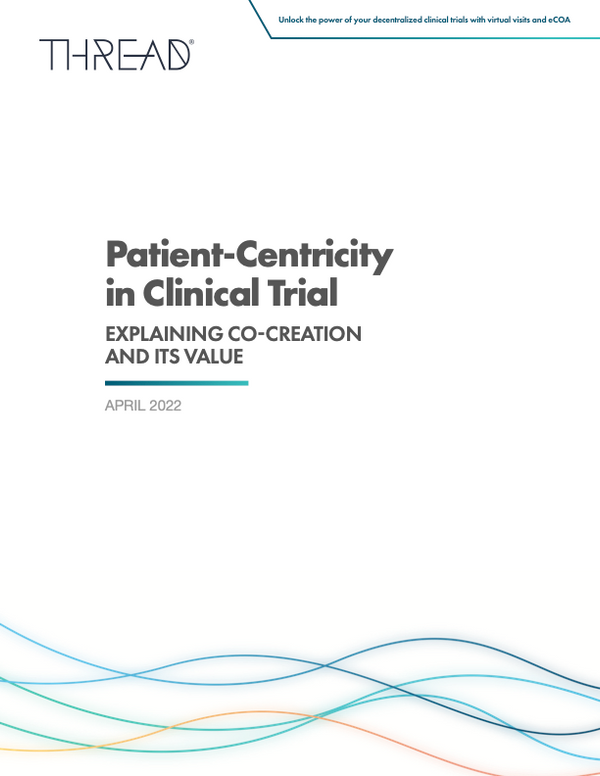
Patient-Centricity in Clinical Trial: Explaining Co-Creation and it's Value
Successful clinical trials depend on the enrollment and retention of significant numbers of eligible participants. Over the years, however, this has proven difficult to accomplish. Insufficient recruitment and high dropout rates have led the industry to seek out new ways to conduct clinical trials, ways that work better for the patients.
Download the whitepaper.
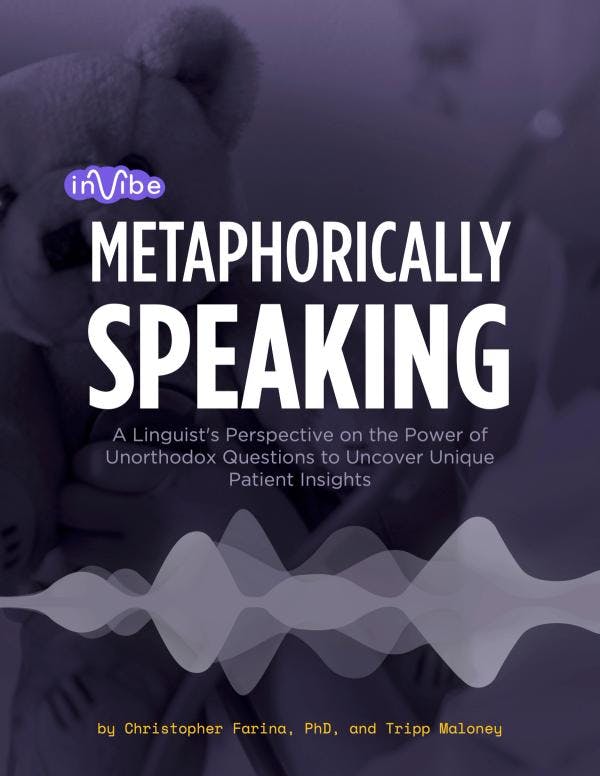
Metaphorically Speaking: A Linguist's Perspective on the Power of Unorthodox Questions to Uncover Unique Patient Insights
This free whitepaper explores a novel approach to extracting insights from how patients use metaphorical language. In it, we demonstrate how linguistic analysis can decode metaphors to provide generalizable insight and how unorthodox lines of questioning can obtain more authentic responses than those the market research community traditionally uses.
In this whitepaper, we explore the following topics:
- The power of ubiquitous, familiar metaphors and figurative language
- How conventional question design traps patients into giving compelling but inaccurate stories
- The use of novel questions and methods to produce more authentic and resonant stories
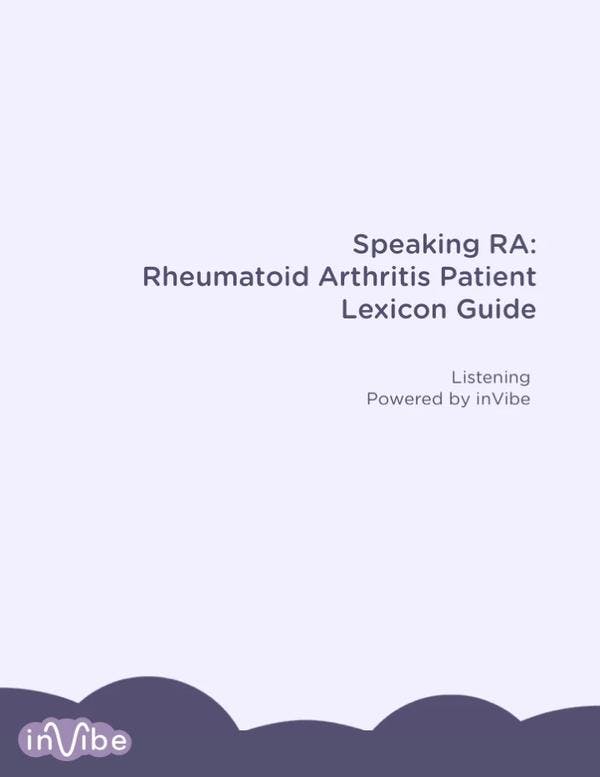
Speaking RA: Rheumatoid Arthritis Patient Lexicon Guide
In this whitepaper, you’ll see how patients in various stages of their therapeutic journey communicate experiences differently and why understanding those language patterns is crucial to addressing their needs.
Explore the following topics:
- Disconnects between what patients experience and what they share with their physicians
- The natural lexicon of "bad days" and "good days" in RA
- How the language of RA changes over the patient's journey
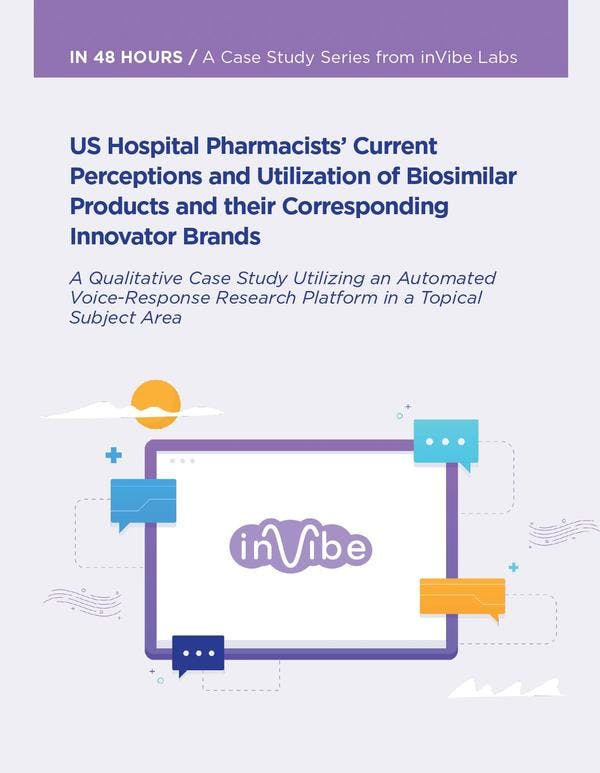
US Hospital Pharmacists' Current Perceptions and Utilization of Biosimilar Products and their Corresponding Innovator Brands
More than physicians, nurses, or payers, hospital pharmacists are closest to issues related to biosimilars and can provide a broad perspective on this subject. In February 2018, inVibe fielded an open-ended, eight-question survey to Hospital Pharmacy Directors and Associate Directors responsible for making formulary recommendations, including purchasing, acquiring, and dispensing biosimilars.
The study objective was to understand how hospital pharmacists currently perceive and utilize biosimilars in comparison to the originators’ corresponding biological products.
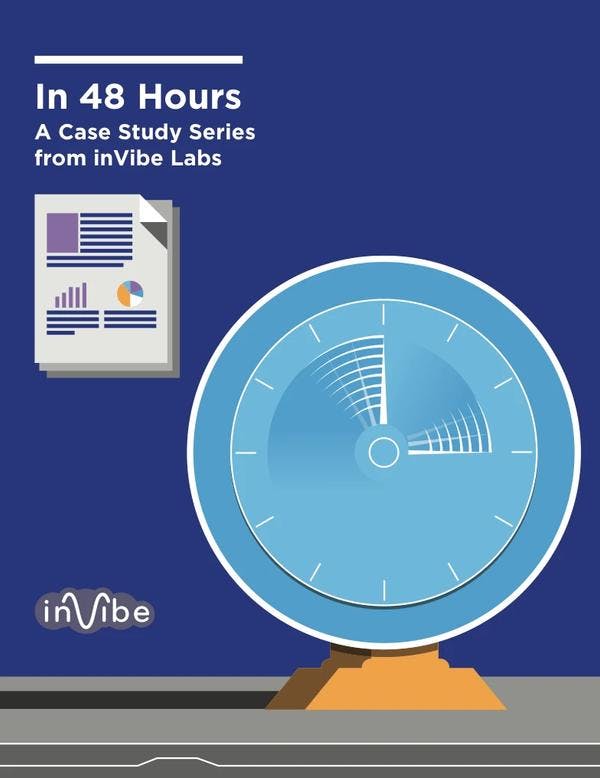
Oncologists’ Current Perceptions and Utilization of Biomarker Testing for Newly-Diagnosed Non-Small Cell Lung Cancer Patients
With the possible exception of breast cancer, biomarker testing is more established in non-small cell lung cancer (NSCLC) than in other oncology indications. If you believe that NSCLC biomarker testing is fully standardized, you would be wrong. Our survey respondents taught us that we are only at the end of the beginning of standardization of NSCLC biomarker testing.
Explore the following topics:
- Biomarkers mentioned in the study: ALK, BRAF, EGFR, HER2, KRAS, PD-L1, ROS1, T790M, and next generation sequencing
- NSCLC treatments mentioned in the study: afatinib (Gilotrif), atezolizumab (Tecentriq), chemotherapy, crizotinib (Xalkori), dabrafnib (Tafinlar), erlotinib (Tarceva), gefitinib (Iressa), nivolumab (Opdivo), osimertinib (Tagrisso), pembrolizumab (Keytruda), pemetrexed (Alimta), trametinib (Mekinst)
- Current challenges and suggested improvements in NSCLC biomarker testing
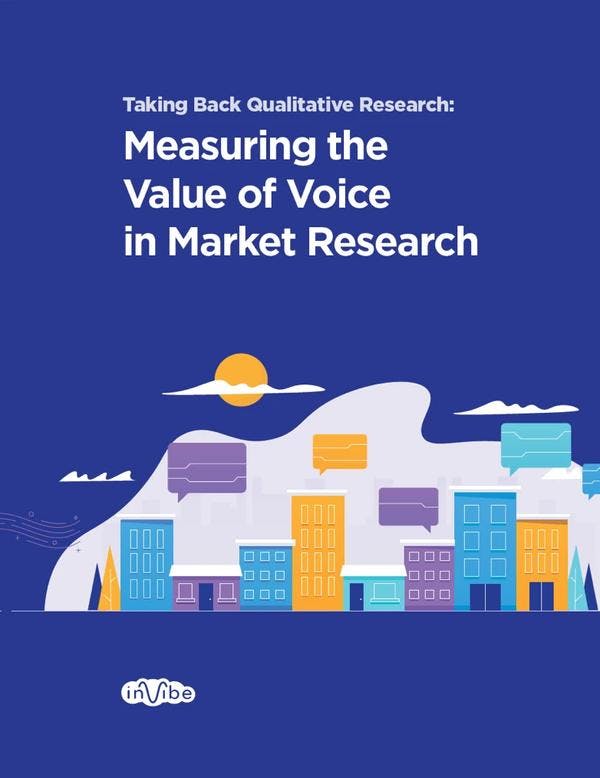
Taking Back Qualitative Market Research: Measuring the Value of Voice in Market Research
This free whitepaper demonstrates how new technologies have reduced the barriers to gathering rich qualitative insights, and why this is important to decision-makers.
Explore the following topics:
- Comparison of prevailing research methodologies
- Keys to establishing data quality for qualitative research
- Consequences of the increasing reliance on web surveys
- Ways to maximize participant response
- How technology can disrupt the qualitative research process
/voice
/resources
/use-cases
- New Data Intelligence
- TrialPulse — Evaluation of Clinical Trial Recruitment Assets
- Concept / Message Testing
- Customer Journey Inflection Points
- Agency Pitch for New Business
- TrialPulse — DCT Design and Informed Consent
- Language of Disease
- Customer Stories
- Decision Drivers
- Market Trends
- TrialPulse — Disease Burden and Endpoint Selection
- HCP – Patient Communication
2025 inVibe - All Rights Reserved
